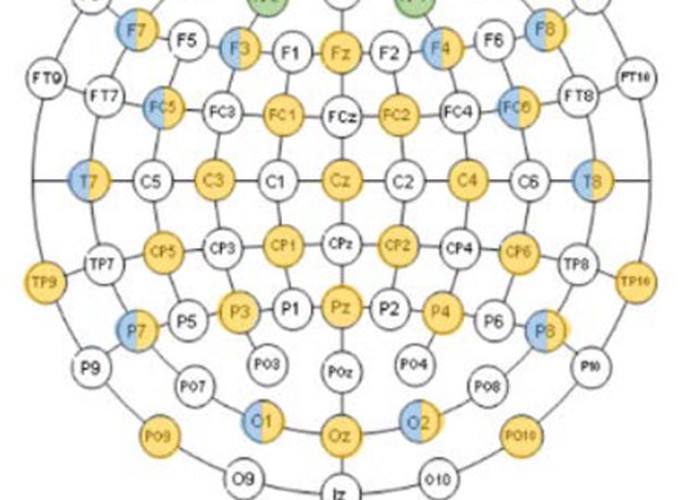Abstract
Decoding motor user intent using electroencephalography (EEG) sensors may aid individuals with limited upper extremity mobility. Researchers have successfully used Filter Bank Common Spatial Pattern(FBCSP) and Linear Discriminant Analysis (LDA) to predict user intent from EEG. Frequency bands between 8 to 40 Hz, with 4 Hz intervals are used as inputs to FBCSP classification. While this range includes the commonly used alpha (8–13 Hz) and beta (16–24 Hz) frequency bands, it excludes the delta band (0.3–3 Hz). The delta band has been shown to contain information regarding user intent. This paper investigates the accuracy of predicting user intent to reach and lift when modifying FBCSP to include combinations of alpha, beta and delta bands. This comparison was performed for clinical (32-electrodes) and commercial (12-electrodes) EEG electrode configurations using the WAY-EEG-GAL dataset. The simulated commercial configuration placement mimicked those from the Emotiv Epoc+. We predicted intent to reach(HandStart) and lift a block (LiftOff) by comparing the EEG signal to rest conditions. Intent classification accuracy is the accuracy to predict the future event before the event occurs. Maximum classification accuracy is the maximum accuracy to predict the event during the region of interest (-2.5, -2.0 sec.). Intent classification accuracy of 80.2% and 76.7% were achieved for the clinical and commercial configurations, respectively. Maximum classification accuracy of 85.9% and 83.0% were achieved for the clinical and commercial configuration, respectively. The combination of all three bands outperformed alpha-beta-only and delta-only by 0.9% and 9.9% for the clinical and 4.0% and 4.3% for the commercial for maximum classification accuracy. Using the combination of bands resulted in a maximum classification above 80% for the commercial configuration. These results suggest that including the delta frequency band can help improve the accuracy of user intent in clinical and commercial headsets.
